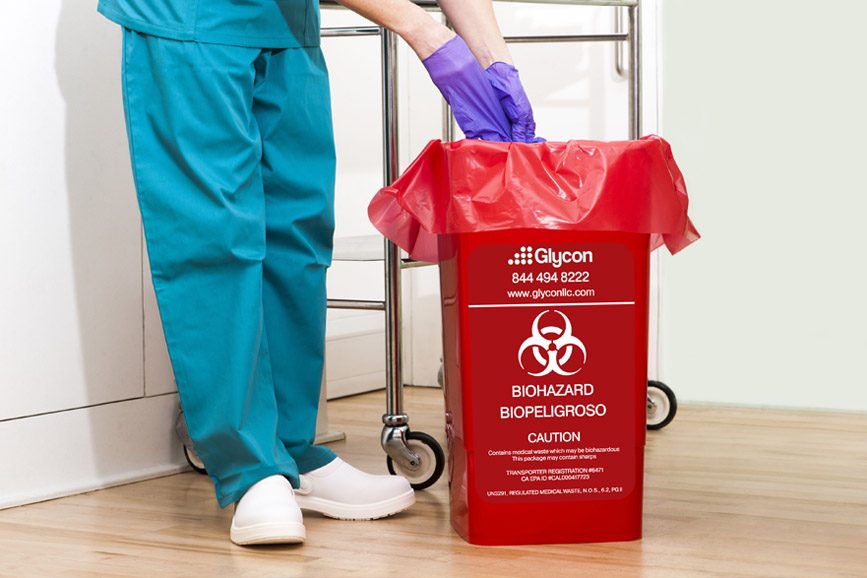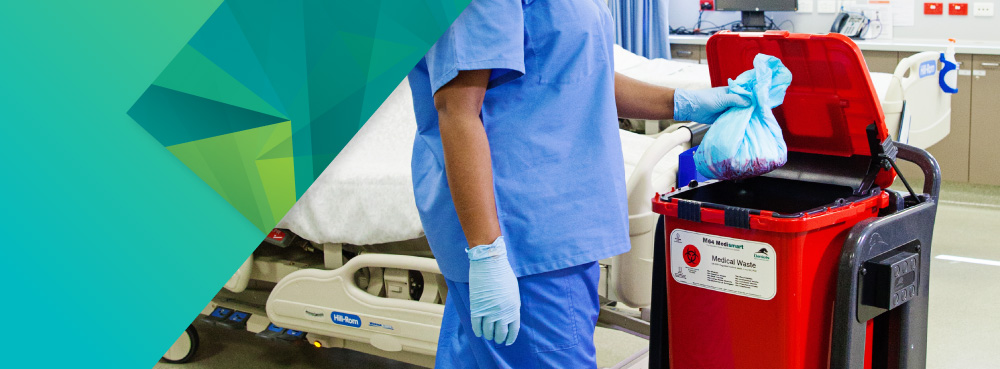Guardians of Sanitation: Citizen Medical Waste Removal Service for Your Peace of Mind
Guardians of Sanitation: Citizen Medical Waste Removal Service for Your Peace of Mind
Blog Article
Minimize Prices and Make The Most Of Safety And Security: Effective Medical Garbage Disposal Approaches
Effective medical waste disposal strategies are essential for healthcare facilities to minimize prices and maximize safety and security. With the expanding problem for ecological sustainability and the boosting number of regulations bordering waste administration, it is critical for medical care organizations to adopt reliable and certified techniques. By executing proper partition and categorization, efficient product packaging and labeling, risk-free transportation and handling, reliable treatment and disposal approaches, and conformity with regulatory standards, health care centers can make sure the accountable and safe administration of medical waste. In this conversation, we will discover each of these techniques thoroughly, supplying insights and functional suggestions for medical care experts to maximize their waste disposal procedures.

Correct Segregation and Categorization
Appropriate partition and classification are crucial components of efficient medical garbage disposal approaches, ensuring the safety of health care workers, the public, and the setting - medical waste removal service. medical waste disposal services with WasteX. By separating various sorts of clinical waste at the point of generation, health care facilities can minimize the threat of cross-contamination and prospective harm to people and ecological communities
One of the crucial elements in proper partition is the identification and category of medical waste. This includes classifying waste into various groups, such as infectious, harmful, radioactive, or pharmaceutical waste. Each group requires details handling, storage, and disposal approaches to stop any negative effects on human health and wellness and the environment.
Moreover, proper partition also includes making use of color-coded containers and labels to clearly determine and differentiate the different kinds of medical waste. This assists medical care workers and waste monitoring personnel to quickly identify and deal with the waste properly. Red containers may be utilized for transmittable waste, while yellow containers might be designated for harmful waste.
In enhancement to segregation, proper categorization likewise entails the correct packaging and containment of clinical waste. This makes certain that waste is securely stored and delivered without posturing any risks to individuals or the atmosphere. Making use of watertight and puncture-resistant containers, as well as properly sealing and identifying them, assists to avoid any kind of unintended direct exposure or launch of hazardous substances.
Efficient Packaging and Labeling
Efficient packaging and labeling play a crucial role in guaranteeing the effective and safe disposal of medical waste. Proper product packaging is important to prevent leak, damage, or splilling during transportation and handling. It helps to minimize the risk of contamination and protects medical care workers, waste management personnel, and the setting from possible threats.
Clinical waste ought to be packaged in watertight and strong containers that are resistant to puncture and damage. These containers need to be appropriately sealed to stop any leakage. In addition, the product packaging needs to be able to endure the problems of transportation, consisting of temperature level variants and misuse.
Labeling is similarly vital as it gives crucial info regarding the contents of the waste and any kind of potential dangers associated with it. The labels need to include the name of the healthcare facility, the type of waste, and any type of special handling guidelines. Clear and standard labeling guarantees that waste management personnel can quickly identify and handle the waste appropriately.
Effective packaging and labeling additionally aid in the proper partition and categorization of clinical waste. Clear labeling allows for easy identification of various waste streams, such as infectious waste, sharps, or pharmaceutical waste. This assists in enhancing the disposal process and guaranteeing that the waste is treated or thrown away in accordance with regulative guidelines.
Safe Transport and Handling
Ensuring the safe transportation and handling of clinical waste is of utmost significance in order to protect against any kind of possible wellness and ecological risks. Clinical waste, such as sharps, polluted products, and pharmaceutical waste, should be properly packaged and taken care of to lessen the risk of direct exposure to damaging compounds and pathogens.
Transporting medical waste calls for compliance with strict regulations and standards set by neighborhood authorities and environmental learn this here now agencies. These regulations intend to shield the wellness and safety of workers included in waste monitoring and avoid the launch of dangerous materials right into the atmosphere.
To ensure secure transportation, clinical waste must be placed in watertight and puncture-resistant containers that are appropriately sealed and identified. These containers must be protected in a manner that protects against spills or damage during transit (medical waste removal services). Additionally, it is vital to make use of specialized vehicles geared up with suitable security attributes to deliver medical waste. These cars must have sufficient ventilation and be made to stop leak or contamination.
Handling medical waste likewise needs proper training and adherence to security methods. Personnel associated with the handling of clinical waste ought to wear suitable personal safety devices (PPE) such as masks, handwear covers, and dress to reduce the danger of direct exposure. They ought to likewise adhere to stringent health methods to avoid the spread of infections and make sure the secure disposal of waste.
Effective Therapy and Disposal Approaches
Applying proper therapy and disposal approaches is essential in handling medical waste properly and lessening potential health and ecological dangers. Clinical waste, which includes sharps, transmittable materials, chemicals, and pharmaceuticals, can present considerable risks if not dealt with and taken care of properly. There are numerous therapy and disposal techniques readily available that adhere to regulatory standards and advertise safe techniques.
One common method is incineration, which involves melting the waste at heats. Incineration is reliable in damaging virus and minimizing the volume of waste, however it can launch damaging toxins right into the air if not properly regulated. visit site It is important to use modern incinerators furnished with discharge control innovations.
An additional approach is autoclaving, which uses steam and pressure to sterilize the waste. Autoclaving works in eliminating virus and minimizing the volume of waste, but it calls for mindful tracking and maintenance to ensure correct performance. The disinfected waste can then be securely taken care of in a land fill.
Chemical treatment is another alternative, which includes using anti-bacterials or other chemicals to counteract pathogens. This technique is generally utilized for fluid waste, such as research laboratory samplings. It is vital to utilize ideal chemicals and comply with correct procedures to ensure efficient treatment and stop environmental contamination.

Conformity With Regulatory Standards
Abiding by governing guidelines is essential in making sure proper compliance with clinical garbage disposal methods. These standards are implemented to protect public health and wellness, protect against environmental contamination, and preserve workplace security. Conformity with regulatory guidelines is critical for healthcare facilities, as non-compliance can cause penalties, fines, and reputational damages.
Regulatory guidelines detail the proper handling, storage, transportation, and disposal of clinical waste. They give specific directions on product packaging needs, labeling, and record-keeping. These standards also attend to the partition of various waste streams, such as sharps, transmittable waste, and pharmaceutical waste. Healthcare centers should make sure that their waste monitoring techniques straighten with these guidelines to minimize the risk of exposure to dangerous materials and avoid the spread of infections.
To maintain compliance, healthcare centers need to develop thorough waste monitoring programs that consist of personnel training, routine audits, and ongoing monitoring. It is important to keep up-to-date with any kind of updates or adjustments to regulative guidelines, as practices might advance gradually. By staying informed and implementing correct methods, health care facilities can reduce the possibility for regulative violations and protect the health and wellness of their staff, patients, and the bordering neighborhood.
Conclusion
In verdict, carrying out effective clinical waste disposal strategies is critical for making the most of and decreasing expenses safety and security. Appropriate segregation and classification, efficient product packaging and labeling, safe transport and handling, and effective therapy and disposal methods are necessary steps to make certain compliance with regulative guidelines. medical waste removal near me. By adhering to these approaches, healthcare centers can protect the atmosphere and public wellness while also minimizing financial problems linked with medical waste administration
By applying proper partition and categorization, effective product packaging and labeling, risk-free transport and handling, effective treatment and disposal techniques, and conformity with regulatory guidelines, health care centers can look at this now guarantee the accountable and secure management of medical waste. Red containers might be made use of for transmittable waste, while yellow containers may be designated for dangerous waste.
Standard and clear labeling ensures that waste management workers can quickly determine and take care of the waste suitably. (medical waste disposal services with WasteX)
Clear labeling enables for easy identification of various waste streams, such as contagious waste, sharps, or pharmaceutical waste. These guidelines additionally address the partition of various waste streams, such as sharps, contagious waste, and pharmaceutical waste.
Report this page